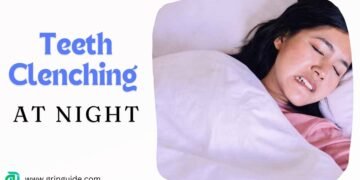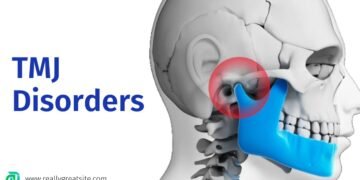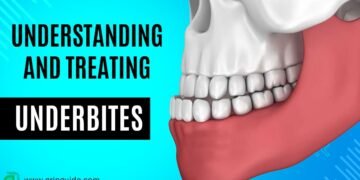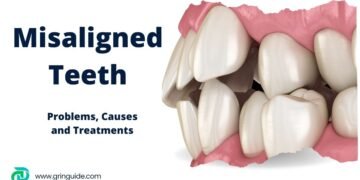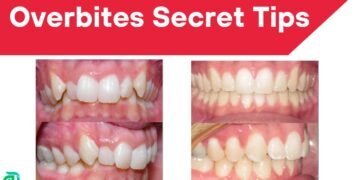Table of Contents
Introduction to Malocclusion
Malocclusion, a term often encountered in dental and orthodontic contexts, refers to the misalignment of teeth and the manner in which they fit together when the jaws are closed. This dental anomaly can manifest in various forms, from minor irregularities to significant misalignments that can impact daily life. Proper alignment of teeth is not merely a matter of aesthetics; it plays a crucial role in maintaining optimal oral health, enhancing one’s appearance, and contributing to overall well-being.
When teeth are properly aligned, they facilitate efficient chewing and speaking functions, thereby promoting healthy digestion and clear communication. Conversely, misaligned teeth can lead to a range of issues, including difficulty in cleaning, which heightens the risk of decay and gum disease. Additionally, improper alignment can cause undue stress on the jaw muscles and joints, potentially leading to temporomandibular joint (TMJ) disorders and chronic pain.
Beyond physical health, the alignment of teeth significantly influences one’s self-esteem and social interactions. A well-aligned smile can boost confidence and enhance one’s personal and professional life. On the other hand, noticeable malocclusion might result in self-consciousness and social anxiety, underscoring the importance of addressing such dental issues.
Understanding malocclusion is the first step towards effective diagnosis and treatment. Dentists and orthodontists utilize a variety of diagnostic tools, including visual examinations, dental impressions, and radiographic imaging, to determine the specific type and severity of malocclusion. With this information, they can devise personalized treatment plans to correct misalignment, ensuring functional efficiency and aesthetic harmony.
As we delve deeper into the various aspects of malocclusion, it becomes evident that addressing misaligned teeth is essential not only for maintaining dental health but also for fostering overall well-being. This comprehensive approach underscores the significance of early detection and intervention in managing malocclusion effectively.
Types of Malocclusion
Malocclusion, commonly known as the misalignment of teeth, manifests in several distinct forms. Each type presents unique characteristics and challenges, affecting both function and aesthetics. Understanding these variations is crucial for diagnosis and treatment planning.
- Overbite: An overbite occurs when the upper front teeth significantly overlap the lower front teeth. This condition can cause excessive wear on the lower teeth, jaw pain, and even speech difficulties. It is one of the most common types of malocclusion and can range from mild to severe, often requiring orthodontic intervention.
- Underbite: An underbite is characterized by the lower front teeth protruding beyond the upper front teeth. This reverse alignment can lead to chewing difficulties, speech problems, and an increased risk of tooth decay due to uneven wear. Underbites often necessitate comprehensive treatment plans, including potential surgical correction in severe cases.
- Crossbite: A crossbite occurs when some of the upper teeth sit inside the lower teeth, rather than outside. This misalignment can affect any group of teeth and may cause issues such as tooth wear, gum disease, and jaw growth problems. Crossbites can be anterior (front teeth) or posterior (back teeth) and often require early intervention to prevent more serious complications.
- Open Bite: An open bite is identified by a gap between the upper and lower front teeth when the back teeth are together. This condition can result in difficulty biting into foods, speech issues, and aesthetic concerns. Open bites can be caused by habits such as thumb sucking or tongue thrusting and typically require orthodontic treatment to correct.
- Crowded Teeth: Crowding happens when there is insufficient space for all the teeth to fit normally within the jaws. This leads to overlapping or twisted teeth, making oral hygiene challenging and increasing the risk of cavities and gum disease. Crowded teeth can be addressed with braces or other orthodontic appliances to realign the teeth for better function and appearance.
Understanding these types of malocclusion helps in recognizing the specific issues each presents, paving the way for effective treatment strategies tailored to individual needs.
Causes of Malocclusion
Malocclusion, commonly referred to as the misalignment of teeth, can arise from a myriad of factors, each contributing to the improper positioning of teeth and jaws. One of the primary causes is genetic predisposition. If parents exhibit malocclusion, it is likely that their children might inherit similar dental issues. This hereditary factor often dictates the overall structure and alignment of the teeth and jaw.
Another significant cause is the premature loss of baby teeth. When primary teeth are lost early, the adjacent teeth may shift into the vacant space, leading to crowding or spacing issues that affect the proper eruption of permanent teeth. This misalignment can result in a malocclusion, necessitating orthodontic intervention.
Childhood habits also play a crucial role in the development of malocclusion. Thumb sucking, for instance, exerts pressure on the teeth and the soft tissues of the mouth, causing the front teeth to protrude or become misaligned. Similarly, prolonged use of pacifiers beyond the age of three can have a detrimental impact on the alignment of teeth by mimicking the effects of thumb sucking.
Furthermore, certain behaviors during childhood, such as tongue thrusting and mouth breathing, can influence the alignment of teeth. Tongue thrusting, where the tongue presses against the teeth while swallowing, can push the teeth out of proper alignment. Mouth breathing, often a result of nasal congestion or other respiratory issues, can affect the development of the jaw and dental arches, leading to malocclusion.
Understanding the causes of malocclusion is essential for early intervention and prevention. By addressing these factors, it is possible to mitigate the severity of misalignment and promote better dental health from a young age.
Symptoms and Complications
Malocclusion, commonly referred to as the misalignment of teeth, can manifest through various symptoms, some of which may significantly impact daily activities.
- One of the primary symptoms is difficulty chewing, which occurs because misaligned teeth do not come together correctly, making it hard to break down food efficiently. This can lead to digestive issues as food is not adequately processed before swallowing.
- Another noticeable symptom is speech problems. Teeth play a critical role in the articulation of sounds, and their misalignment can result in difficulties pronouncing certain words or sounds correctly. This can be particularly challenging for children, potentially affecting their communication skills and self-confidence.
- Facial asymmetry is also a common symptom of malocclusion. Uneven teeth can cause the jaw to shift, leading to an imbalanced appearance. This asymmetry can be subtle or more pronounced, depending on the severity of the misalignment.
- If malocclusion is left untreated, it can lead to several complications. Tooth decay is one such issue, as misaligned teeth can create hard-to-reach spaces where food particles and plaque accumulate. This buildup can increase the risk of cavities and other dental problems.
- Gum disease is another potential complication. Misaligned teeth can make it difficult to maintain proper oral hygiene, resulting in plaque and tartar buildup along the gum line. This can lead to inflammation, bleeding, and eventual gum disease if not addressed promptly.
- Jaw pain is also a significant concern. The misalignment of teeth can cause strain on the jaw muscles and joints, leading to discomfort or even temporomandibular joint (TMJ) disorders. This pain can be persistent and may interfere with daily activities such as eating, speaking, and even sleeping.
In conclusion, recognizing the symptoms of malocclusion and understanding the potential complications of untreated misalignment is crucial for maintaining oral health and overall well-being. Early diagnosis and appropriate treatment can help mitigate these issues and improve quality of life.
Diagnosis and Assessment
Proper diagnosis and assessment of malocclusion, commonly known as the misalignment of teeth, are critical steps in addressing dental health issues effectively. Dentists and orthodontists employ a variety of methods to identify and evaluate the degree of misalignment in a patient’s teeth. These methods ensure that the most suitable treatment plan is developed for each individual case.
One of the primary techniques used in diagnosing malocclusion is the visual examination. During a routine dental check-up, the dentist inspects the oral cavity for evident signs of teeth misalignment, such as overcrowding, spacing, and bite irregularities. This preliminary assessment helps in identifying the need for further diagnostic procedures.
X-rays are another crucial tool in the diagnosis process. They provide a comprehensive view of the teeth, jawbones, and surrounding structures, revealing hidden issues that are not visible during the visual examination. X-rays allow orthodontists to assess the position and alignment of the teeth in relation to the jaw, aiding in the early detection of potential complications.
Dental impressions are also commonly used in the assessment of malocclusion. By taking precise molds of the teeth and gums, dentists can create detailed models that represent the patient’s mouth. These models are instrumental in planning treatment strategies, as they offer a tangible reference for analyzing the extent of misalignment and predicting the outcome of corrective procedures.
Early detection and thorough assessment of teeth misalignment are vital for effective treatment. Identifying malocclusion at an early stage allows for timely intervention, potentially reducing the complexity and duration of orthodontic treatment. By employing a combination of visual examinations, X-rays, and dental impressions, dental professionals can ensure accurate diagnosis and optimal care for patients experiencing misalignment of teeth.
Treatment Options
When addressing the misalignment of teeth, various treatment options are available depending on the severity and specific type of malocclusion. One of the most common treatments is the use of braces. Braces consist of metal brackets and wires that apply continuous pressure, gradually moving teeth into their correct positions. While highly effective, braces can be uncomfortable and require regular adjustments by an orthodontist. Moreover, they can impact oral hygiene due to the difficulty of cleaning around the brackets and wires.
Another popular option is clear aligners, such as Invisalign. These are custom-made, transparent trays that fit snugly over the teeth and are replaced every few weeks as the teeth move. Clear aligners are less noticeable than braces and can be removed for eating and cleaning, making them a more convenient option for many patients. However, they may not be suitable for severe cases of tooth misalignment and usually require a high level of patient compliance to be effective.

Retainers are often used after braces or aligners to maintain the new positioning of the teeth. They are usually worn overnight and are essential in ensuring that the teeth do not shift back to their original misaligned positions. Retainers can be either fixed or removable, depending on the recommendation of the orthodontist. Although they are less invasive than other treatments, retainers still require diligent care and responsibility from the patient.
In cases of severe malocclusion, surgical intervention might be necessary. Orthognathic surgery involves the realignment of the jaws and teeth to improve both function and appearance. This type of treatment is often recommended when other orthodontic methods are insufficient. The benefits of surgical intervention include a permanent solution to severe misalignment issues, but it comes with higher risks and a longer recovery period compared to non-surgical treatments.
Each treatment option for the misalignment of teeth has its own set of benefits and potential drawbacks. The choice of treatment should be made in consultation with a qualified orthodontist, who can provide a personalized plan based on the specific needs and circumstances of the patient.
Preventive Measures
Preventing the misalignment of teeth, also known as malocclusion, begins with establishing and maintaining proper dental hygiene from an early age. Regular brushing and flossing are fundamental to ensuring healthy teeth and gums, which can help prevent various dental issues that may contribute to misalignment. Encouraging children to adopt these habits early on sets a foundation for lifelong oral health.
Regular dental check-ups play a crucial role in the early detection and management of potential issues that might lead to malocclusion. Dentists can identify signs of misalignment in its nascent stages and provide guidance or intervention strategies to correct or mitigate its development. These visits should ideally commence with the eruption of the first tooth and continue throughout life.
Addressing habits such as thumb sucking, tongue thrusting, and prolonged use of pacifiers is also essential in preventing the misalignment of teeth. These habits can exert undue pressure on the developing teeth and jaw, leading to malocclusion. Parents and caregivers should be vigilant in identifying and curbing these behaviors early on. Techniques such as positive reinforcement and providing alternative comfort methods can be effective in discouraging these habits.
The role of parents and caregivers extends beyond monitoring habits. They should also ensure that children maintain a balanced diet rich in essential nutrients, as proper nutrition is vital for the development of strong, healthy teeth. Foods high in calcium, vitamin D, and phosphorus are particularly beneficial.
In addition, ensuring that children avoid excessive consumption of sugary foods and beverages can prevent cavities and other dental issues that may lead to or exacerbate misalignment. Providing a supportive environment where dental health is prioritized sets the stage for children to value and maintain their oral hygiene practices.
In summary, preventive measures against malocclusion involve a combination of diligent dental hygiene, regular professional evaluations, early intervention for detrimental habits, and a supportive role by parents and caregivers in fostering a health-conscious environment. These strategies collectively contribute to reducing the risk and impact of teeth misalignment.
Living with Malocclusion
Living with malocclusion, or the misalignment of teeth, presents unique challenges, primarily centered around maintaining oral health and managing ongoing issues. A proactive approach to dental care is essential. Regular brushing and flossing, using fluoride toothpaste, and attending periodic dental check-ups can mitigate plaque accumulation, which is crucial for avoiding cavities and gum disease. Individuals with malocclusion may find it beneficial to use specialized tools, such as interdental brushes, to ensure thorough cleaning between misaligned teeth.
For those undergoing orthodontic treatment, adapting to braces or other corrective devices can be daunting. Initially, braces can cause discomfort and irritation to the gums and inner cheeks. Utilizing orthodontic wax to cover sharp edges and adhering to a diet of soft foods can alleviate these issues. Over-the-counter pain relievers may also be effective for managing soreness. Maintaining a balanced diet that avoids sticky or hard foods will prevent damage to the orthodontic hardware and help in achieving desired results more efficiently.
Oral hygiene becomes even more critical during orthodontic treatment. Cleaning around braces requires diligence; using an orthodontic toothbrush and threading floss between wires can help remove trapped food particles. Additionally, mouth rinses with antibacterial properties can reduce the risk of infections and contribute to a cleaner oral environment.
Despite the hurdles, fostering a positive outlook is vital. Embracing the temporary discomfort and inconvenience can lead to long-term benefits such as improved dental health and enhanced self-esteem. Support from family, friends, and orthodontic professionals can provide the necessary encouragement during the treatment journey. Setting small, attainable goals and celebrating progress can also bolster motivation and perseverance.
Ultimately, living with malocclusion necessitates a blend of meticulous oral care and mental resilience. By following recommended dental practices and maintaining a supportive network, individuals can navigate the path to a healthier and more aligned smile effectively.
FAQs
-
What are two bad effects of malocclusion?
One of the significant bad effects of malocclusion is difficulty in chewing and speaking. Misaligned teeth can make it hard to properly chew food, which can lead to digestive problems. Speech issues can also arise because the improper alignment can interfere with the tongue’s movement and pronunciation.
Another adverse effect is the increased risk of tooth decay and gum disease. Crooked or crowded teeth are harder to clean properly, which can lead to plaque buildup, cavities, and periodontal disease. This can ultimately impact overall oral health and lead to more severe dental issues. -
What is the most common cause of malocclusion?
The most common cause of malocclusion is genetics. Many people inherit the size and shape of their jaw and teeth from their parents, which can result in misalignment. Other contributing factors include thumb sucking, prolonged use of a pacifier, and losing baby teeth too early or too late.
-
Is Malocclusion an Overbite?
Malocclusion is a broad term that includes various types of misalignment, including overbites. An overbite is a specific condition where the upper teeth significantly overlap the lower teeth. While an overbite is a type of malocclusion, not all malocclusions are overbites. Other types include underbites, crossbites, and open bites.
-
What happens if class 3 malocclusion is left untreated?
If class 3 malocclusion, also known as an underbite, is left untreated, it can lead to several severe complications. These can include chronic jaw pain, temporomandibular joint disorder (TMJ), and significant wear on the teeth. Additionally, untreated class 3 malocclusion can contribute to difficulties in chewing and speaking, as well as aesthetic concerns that can affect self-esteem and social interactions.
